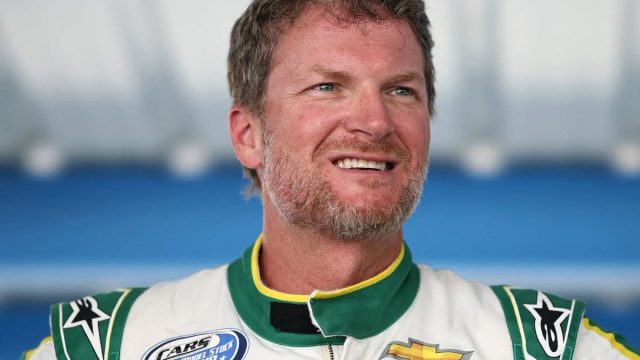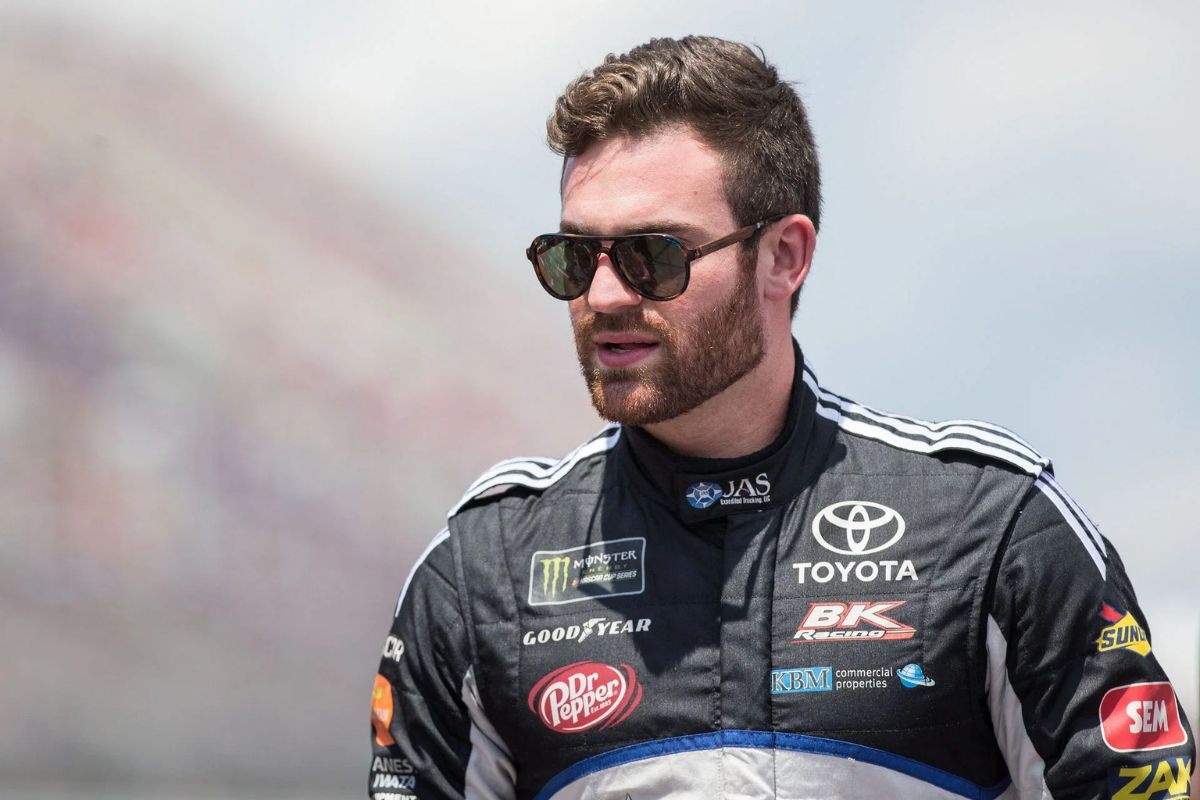Dale Jr. Slams NASCAR for Next-Gen Flaw: Dale Earnhardt Jr.’s recent condemnation of NASCAR regarding the Next-Gen car design flaws, in consideration of Corey LaJoie‘s crash at Michigan, raises critical questions about the organization’s commitment to driver safety. His call for accountability highlights a broader concern within the racing community about the adequacy of current safety protocols. As the industry grapples with these issues, it becomes crucial to analyze how these design shortcomings not only impact individual drivers but may also reflect systemic challenges within NASCAR’s approach to innovation and safety. What implications will this have for the future of racing?
Key Highlights
- Dale Earnhardt Jr. criticizes NASCAR for inadequate safety measures in the design of Next-Gen cars following Corey LaJoie’s rollover crash at Michigan.
- He emphasizes the need for NASCAR to address design flaws that compromise driver safety and stability during crashes.
- LaJoie’s crash raises concerns about the structural integrity and impact absorption capabilities of the Next-Gen vehicles.
- Junior’s critique highlights the importance of timely responses to driver safety concerns, fostering a safer racing environment.
- The incident may prompt regulatory changes and investigations into NASCAR’s car design and safety protocols moving forward.
Accident Overview and Safety Concerns
The recent accident involving Corey LaJoie at Michigan International Speedway has reignited critical discussions around safety in NASCAR’s Next-Gen cars. LaJoie’s incident occurred when he made slight contact with the No. 10 car, resulting in an unexpected launch into the air, flipping upside down and skidding along the racing surface. This incident not only emphasizes the unpredictable nature of high-speed racing but also highlights important concerns regarding the integrity of safety features embedded in these vehicles.
Despite ongoing improvements to car safety measures, LaJoie’s accident raises questions about the effectiveness of the Next-Gen car’s design. Observers, including Dale Earnhardt Jr., have voiced their frustrations regarding the apparent shortcomings in structural resilience and crash management capabilities. The ability of these vehicles to withstand impacts while protecting the driver is paramount, yet the design flaws evidenced in LaJoie’s crash suggest a need for re-evaluation.
Critics argue that the Next-Gen car, while groundbreaking, may sacrifice protection for aerodynamics and performance. The incident serves as a glaring reminder that safety should remain the foremost priority in vehicle design.
The consequences of LaJoie’s accident extend beyond the immediate impact; they compel NASCAR to reassess its safety protocols and the engineering of its race cars. As the sport continues to evolve, the imperative for rigorous testing and iterative improvements becomes increasingly clear, ensuring that driver safety is not compromised in pursuit of speed and efficiency.
Comparison to Previous Crashes
NASCAR’s history is punctuated by a series of dramatic crashes, each serving as a catalyst for discussions surrounding safety and vehicle design. The recent incident involving Corey LaJoie echoes earlier high-profile crashes, particularly Ryan Preece’s terrifying Daytona crash. In both cases, the cars exhibited alarming behavior, becoming airborne despite safety features designed to mitigate such risks. LaJoie’s car, the No. 7, flipped multiple times before ultimately landing on its wheels, raising concerns about the Next Gen car’s ability to maintain stability during extreme situations.
The contrast between the older car designs and the Next Gen vehicles is pronounced. While older models, despite greater power, managed to stay more connected to the track, the Next Gen’s compact design appears to have contributed to a troubling increase in rollovers. Dale Earnhardt Jr. and others have pointed out the unsettling trend of increased flips in recent races, signaling a potential flaw in the current design philosophy.
For sure. And cars have been flipping in NASCAR since the beginning. It's an unpleasant consequence of going fast. And we should always go fast. https://t.co/49MLVMwnxP
— Dale Earnhardt Jr. (@DaleJr) August 19, 2024
As NASCAR continues to evolve, it is imperative that the organization reassesses vehicle design and safety protocols to mitigate the risk of such incidents. The sport’s commitment to speed must be balanced with a steadfast dedication to driver safety.
NASCAR’s Design and Safety Issues
Amidst the ongoing evolution of stock car racing, substantial design and safety concerns have emerged, particularly with the Next Gen vehicles. Recent incidents, such as Corey LaJoie’s crash, reflect the alarming dynamics observed in previous accidents like Ryan Preece’s, where a 3,300-pound racecar exhibited precarious behavior similar to a toy under extreme conditions.
These occurrences raise critical questions about the effectiveness of current safety measures.
The following aspects highlight the urgent need for a reevaluation of NASCAR’s design philosophy:
- Structural Integrity: The materials and design of Next Gen cars may not adequately absorb impacts, leading to increased risk during collisions.
- Aerodynamics: Improved aerodynamic features should not compromise vehicle stability; excessive lift during crashes can lead to catastrophic outcomes.
- Driver Protection: Advances in seat and harness technology are crucial, yet they must be effectively integrated to safeguard drivers during severe impacts.
- Post-Crash Safety Protocols: Procedures for evaluating vehicle damage and driver well-being after incidents require robust review to guarantee timely and effective responses.
As NASCAR anticipates future developments, it must prioritize the intersection of innovation and safety.
Corey LaJoie’s Reaction and Season Challenges
Following the alarming safety concerns surrounding the Next Gen vehicles, Corey LaJoie’s recent experiences on the track highlight the challenges faced by drivers in the current season. Despite aspirations for a strong performance, LaJoie’s 2023 campaign has been marked by misfortune, culminating in a distressing crash that saw him end the race upside down.
This incident not only emphasizes the unpredictable nature of racing but also reflects the broader issues drivers contend with in the wake of evolving vehicle designs.
LaJoie’s palpable frustration is evident in his remarks post-crash, where he lamented the series of unfortunate events this season. “We have a good car, and I find a way to flip it upside down,” he expressed, a sentiment that resonates with many competitors grappling with similar obstacles.
“That’s just about the way the year’s gone. We have a good car, and I find a way to flip it upside down. Twice this year, we’ve been upside down and I haven’t been upside down my whole career.” – LaJoie’
The fact that he has flipped his car twice this year, a clear contrast to his previous career, signals a troubling trend that raises questions about vehicle stability and driver safety.
The mounting strain on LaJoie and his team at Spire Motorsports is compounded by this season’s performance struggles. While the potential for success exists, the consistency needed to capitalize on it has evaded them.
LaJoie’s Thoughts on the Incident
Reflecting on the incident, LaJoie’s remarks reveal a deep sense of frustration and disappointment, particularly regarding his interactions with fellow driver Noah Gragson. LaJoie acknowledged that Gragson, who inadvertently contributed to the crash, did not intend to send him airborne.
He noted, “The 10 chopped me a couple of times, especially off two,” indicating a series of aggressive tactics that ultimately led to the unfortunate outcome. LaJoie expressed regret over the missed opportunity, stating, “I think we had a top 12, top 10 car today, and I hate we ended up on our roof.”
In analyzing the incident, LaJoie’s reflections can be distilled into four critical points:
- Unintentional Aggression: LaJoie recognized that Gragson’s actions were not malicious, emphasizing the unpredictable nature of racing.
- Lost Potential: He believed his car had the capability to finish in a respectable position, highlighting the impact of the crash on his season.
- Future Aspirations: Despite the setback, LaJoie remains focused on concluding his tenure with Spire in a positive manner, indicating a resilient mindset.
- Upcoming Opportunities: He remains optimistic about the opportunities that lie ahead, suggesting a forward-looking approach that transcends this incident.
Ultimately, LaJoie’s insights reflect the complexities and challenges inherent in competitive racing, emphasizing the need for clear communication and understanding among drivers.
News in Brief: Dale Jr. Slams NASCAR for Next-Gen Flaw
In view of recent events, the urgent call for improved safety measures within NASCAR’s Next-Gen car design is paramount. The alarming incident involving Corey LaJoie highlights notable flaws that compromise driver protection. As the racing community rallies for accountability, it becomes increasingly evident that prioritizing vehicle integrity is crucial for ensuring the safety of all competitors. The need for an all-encompassing evaluation of design protocols and safety standards reflects a pivotal point in the evolution of NASCAR’s commitment to driver welfare.
ALSO READ: Dale Jr. Reflects on Losing to His Father: The 0.007-Second Defeat That Still Stings



